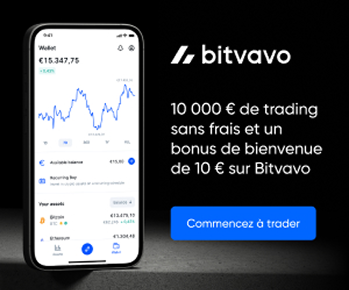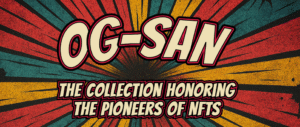Introduction – Why Investing in XTAROT is Gaining Interest Among Crypto Investors

XTAROT is an innovative token at the heart of the Tarot protocol, a DeFi platform that’s gaining increasing attention from investors seeking yield and active governance. This article offers a comprehensive analysis to understand how XTAROT works, its underlying technology, use cases, and the key steps to buy and invest in it wisely. XTAROT is volatile in the short term, responding strongly to available liquidity and adoption. Its trajectory also depends on DeFi regulations and integration within EVM-compatible ecosystems. In the long run, XTAROT holds strong potential thanks to its focus on predictive finance, decentralized oracles, and an incentivized reward structure. It positions itself as a strategic tool to diversify a crypto portfolio while actively contributing to the evolution of an innovative DeFi protocol.
Key takeaways
- What XTAROT is, its role and utility in the Tarot protocol
- How its technology works (staking, governance, oracles)
- The project’s background and origins
- Concrete use cases and its unique value proposition
- Long-term development and investment potential
XTAROT Overview – A DeFi Token Designed to Reward Engagement
XTAROT is the derivative token of the Tarot protocol, a decentralized finance project specializing in leveraged lending through isolated lending pools. Unlike many purely speculative tokens, XTAROT stands out for its functional role: it represents both governance power and a source of passive income. Obtained by staking the native TAROT token, XTAROT allows users to influence protocol decisions while earning a share of revenue generated by lending, borrowing, and farming activities. The project aims to build a resilient, community-driven, and sustainable DeFi ecosystem. In a space where many platforms face growing centralization or complexity, XTAROT takes a different path. It embodies functional simplicity: a token that rewards participation without requiring deep technical expertise. By giving each user a voice and a stake in the protocol’s success, Tarot creates a truly distributed governance model supported by a transparent and incentive-aligned economy. On a technical level, XTAROT operates in a multi-chain environment compatible with the Ethereum Virtual Machine (EVM), enabling easy integration into other DeFi protocols. This interoperability expands its utility and liquidity beyond Tarot, making it suitable for more complex yield strategies. With a clear structure, accessible entry points, and strong community backing, XTAROT is a key building block of a maturing DeFi ecosystem.How Does XTAROT Work? – A Simple, Efficient, and Incentive-Driven Mechanism
XTAROT operates through a user-friendly yet strategically designed mechanism for decentralized finance users. It is a derivative token obtained by staking TAROT tokens on the Tarot protocol. In return, users receive XTAROT, granting them voting rights within the DAO and a share of revenue generated through lending, borrowing, and leveraged farming.Technology Used
Consensus type: Tarot uses a Proof-of-Stake (PoS) consensus, enabling fast and secure validation while being more energy-efficient than Proof-of-Work. Users who stake their TAROT contribute to network stability while earning XTAROT in return. EVM compatibility: XTAROT runs on an EVM-compatible infrastructure, ensuring interoperability with other DeFi protocols across chains like Fantom and Optimism. Technical specifics: Tarot’s isolated lending pools minimize risk between assets. XTAROT doesn’t host smart contracts independently but functions within a simplified and secure framework. No external oracles are required, which limits attack surfaces and technical vulnerabilities.XTAROT Token Utility
XTAROT rewards community engagement and ensures participatory governance. It allows users to vote on key decisions (rates, protocol changes, partnerships) and can serve as collateral within lending operations. While not designed for advanced DeFi functionalities alone, it is highly effective in driving yield and governance participation.Project History and Creation – A DeFi Protocol Built to Last
The Tarot protocol was launched in June 2021 on Fantom with a clear mission: build a secure and flexible DeFi lending platform using isolated pools. From day one, it focused on minimizing systemic risks and giving users more control over their funds. In August 2021, Tarot launched its TAROT token through a Liquidity Generation Event (LGE) – not via private fundraising or presales – ensuring fair distribution and community ownership. This marked the foundation of its decentralized model. In May 2022, Tarot expanded to Optimism, embracing a multi-chain approach to enhance reach and performance. This move reflected its goal of broader interoperability within the DeFi ecosystem. XTAROT was then introduced to extend that model: offering both governance power and protocol revenue sharing for those who stake TAROT.Key Milestones:
- June 2021: Launch of Tarot on Fantom
- August 2021: TAROT distributed via community-focused LGE
- May 2022: Deployment on Optimism
- 2022–2023: Expansion of staking, launch of XTAROT
- Today: XTAROT is central to Tarot’s governance and economic model
Founders and Team
The founding team remains anonymous, in line with DeFi’s ethos of decentralization and technology-first focus. This reinforces the credibility of the protocol among serious DeFi users.
The cryptocurrency XTarot is actually an NFT collection project oriented toward « Crypto Tarot. » According to WunderTrading, it was created in collaboration between Radik Z, an illustrator/designer, and the WunderTrading platform (wundertrading.com).
- Radik Z: Responsible for design and artistic aspects.
- WunderTrading: Official collaborator and technical support.
What Makes [Nom cryptomonnaie] Unique?
XTAROT’s Unique Features – Practical Use Cases and Strategic Positioning
XTAROT isn’t just a governance token – it’s part of a user-centric strategy designed to strengthen engagement and support a healthy ecosystem. By enabling voting and revenue sharing, it makes users stakeholders in both economic and strategic decisions. As a staking-derived asset, XTAROT is also used as collateral in lending pools, adding liquidity while providing earning opportunities. This dual functionality is highly valued by experienced DeFi users building advanced yield strategies.
Its value proposition lies in its simplicity. XTAROT provides clear, efficient governance without the burden of excessive complexity. It prioritizes utility over speculation and favors transparency over technical opacity.
Being EVM-compatible, it integrates seamlessly into other platforms across the Ethereum, Fantom, and Optimism networks. This makes it flexible and effective across multiple DeFi use cases including liquidity mining, farming, and governance.

Compared to Other Projects
Unlike Aave or Compound, XTAROT avoids complex over-collateralization schemes. Instead, it offers an accessible, community-driven alternative. Compared to tokens like CRV or MKR, it’s more agile, less speculative, and more focused on participatory value. In short, XTAROT is built on:- Direct utility
- Aligned incentives
- Open governance
Conclusion – XTAROT, a Token at the Crossroads of Governance and Yield
XTAROT represents the new generation of DeFi tokens: usable, rewarding, and community-first. It allows users to play an active role in shaping the protocol while earning yield through staking. Its EVM compatibility and fair distribution model enhance its reliability and flexibility. Its long-term success will depend on Tarot’s ability to expand across chains, retain its community, and continue innovating without overengineering. In an ecosystem filled with complexity, XTAROT stands out as a lean, effective, and enduring asset.
FAQ – XTAROT: Common Questions
- What is XTAROT used for? XTAROT is used for governance, yield generation, and as collateral in Tarot’s lending pools.
- Is XTAROT a good investment? It offers passive income via staking and governance utility, making it a strong long-term DeFi asset.
- How is it different from Aave or Compound? XTAROT focuses on simplicity and isolated pools, while Aave/Compound use more complex financial systems.
- Where can I store XTAROT? Use any EVM-compatible wallet like MetaMask or Rabby, on Fantom or Optimism.
- Is the project secure? Yes, Tarot uses a robust Proof-of-Stake system, with isolated pools and a stable technical design.
- Can XTAROT be used on multiple chains? Absolutely. It supports usage across EVM-compatible networks including Fantom and Optimism.
Disclaimer :
Trading is risky and you may lose all or part of your capital. The information provided does not constitute financial advice and/or an investment recommendation
Top-Rated Platforms to Trade Crypto
Explore Our Financial Views on the Market
Crypto News & Insights
European Blockchain Convention 2025: Connecting Europe’s
Europe’s blockchain landscape is evolving rapidly despite challenges. Blockchain job...
Blockchain Life 2025 Dubai: A must-attend
The Blockchain Life Forum 2025, happening on October 28–29 in...













